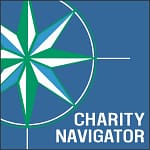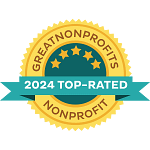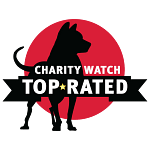Thank you for your commitment to helping make end-of-life options a reality for all. This online toolkit provides valuable educational materials and practical information to help share our resources and engage with the LGBTQ+ community.
LGBTQ+ Outreach: What You Need to Know
Understanding the Law
It’s important to understand some barriers and challenges that LGBTQ+ individuals, their loved ones, and partners may face when planning or preparing for the end of life.The LGBTQ+ community has long fought for equality in healthcare and that extends to the end of life.
Advance Directives and End-of-Life Planning
An advance healthcare directive is a legal document in which a person specifies what actions should be taken for their health if they are no longer able to make decisions for themselves because of illness or incapacity. Every adult has the right to create an advance healthcare directive, and it is the obligation of every hospital to honor these documents.
Without an advance healthcare directive, end-of-life care decisions are often left for spouses or close family members to determine and administer. For patients in LGBTQ+ relationships, the state in which they reside may or may not recognize their marriage or unmarried partner as fitting one of those categories, even after the Supreme Court of the United States of America recognized same-sex marriage as a constitutional right guaranteed to all Americans. Some states have possibly not yet amended statutes that address healthcare decision making in relation to same-sex marriages.
This is why advance directives are so crucial to the lives of LGBTQ+ people. Access your state-specific advance directive by visiting: https://compassionandchoices.org/our-issues/advance-care-planning
End-of-life discussions are difficult, but important conversations to have with those around you. It is also necessary to talk about it with your physician. Determining early that they are willing to participate and support your choices can be key to avoiding undue delays at a critical time in your care.
What Are Default Surrogate Selection Laws?
When there is no appointed guardian or advance healthcare directive in place, a doctor or the healthcare team may select a surrogate medical decision-maker. State default medical decision-making laws contain prioritized lists of individuals who are best situated to control the course of medical care for incapacitated patients. Usually, the most appropriate surrogate is deemed to be the spouse of the incapacitated individual.
Decision-making authority that would be automatic in heterosexual relationships may be actively denied in same-sex relationships, and life partners may be prevented access to one another at the end of life. Additionally, some states have priority lists that determine who is authorized to make healthcare decisions when no documentation is available, and a same-sex partner may not be recognized as the default decision-maker.
Careful end-of-life planning is essential for LGBTQ+ patients so they know and understand their options for end-of-life care. It’s important to be familiar with state statutes as they pertain to healthcare decision-making.We should educate each other on the importance of completing an advance healthcare directive to ensure a surrogate is named and wishes are honored.
Bringing your questions and goals with you when you see your healthcare provider is an important way to prepare to discuss your end-of-life wishes and ensure your wishes are honored.
End-of-Life Planning Resources for the LGBTQ+ community
End-of-Life Decisions Guide and Toolkit: This guide will help people think through their priorities for end-of-life care, complete an advance directive and other forms they may need, choose a representative to speak for them if they cannot, and consider common end-of-life medical interventions so they can specify what they want or don’t want — right up to the end. And it will guide them to have valuable conversations with their healthcare providers and loved ones.
My Particular Wishes -- This informs physicians, nurses or other care providers of a patient’s consent or refusal of certain specific therapies.
Assisted-Living Facility (ALF) Rider — If a resident of an assisted-living facility (ALF) wants to remain there until the end, they can use the ALF contract rider to ensure the home is suited to their choice.
Sectarian Healthcare Directive — This addendum clarifies that admission to a religiously affiliated facility does not imply consent to care mandated by the institution’s religious policies and directs a transfer if the facility will not follow the preferences in an advance directive.
Values Worksheet — This worksheet includes questions to consider when making end-of-life decisions and preparing documents concerning one’s healthcare preferences.
Hospital Visitation Form — This gives unmarried couples hospital visitation authorization for their partner.
A Gentle Death — To ensure that advance directives are communicated to and respected by healthcare providers, individuals may want to use this sample letter to their doctors to discuss their end-of-life wishes.
Finish Strong: Putting YOUR Priorities First at Life’s End — Finish Strong by President of Compassion & Choices Barbara Coombs Lee is the guide to achieving the positive end-of-life experience you want and deserve. Finish Strong is available for purchase here:
Compassion & Choices and the LGBTQ+ Community
The LGBTQ+ and end-of-life options movements are deeply intertwined, helping each other achieve monumental progress over the years. From the charge to pass the nation’s first Death with Dignity Act in 1994 to allowing LGBTQ+ partners to act as healthcare proxies for one another, the two movements have decades of crossover.
Volunteer Resources
People who educate themselves and others are our greatest hope to keep the end-of-life options movement growing. Whether you host a workshop, house party or canvassing event, Compassion & Choices offers various toolkits, resources and trainings on our Volunteer Resource Center.
LGBTQ+ Voices in the End-of-Life Options Movement
LGBTQ+ Compassion & Choices supporters, volunteers and staff are dedicated to sharing their stories and uplifting the importance of end-of-life planning, care and options. Visit CandC.org/pride to read more.
Not all healthcare providers are comfortable talking about death. It’s really important to have a frank discussion early with your doctor, to be very clear about your end-of-life wishes, and to make sure they are ready and willing to honor them.
LGBTQ+ Leadership Council
The Compassion & Choices LGBTQ+ Leadership Council is committed to raising awareness around the healthcare disparities and barriers that the LGBTQ+ community faces. We created the LGBTQ+ Leadership Council to build partnerships with LGBTQ+ leaders and organizations to help educate and empower LGBTQ+ people to chart their own end-of-life care journey. If you or someone you know is a perfect fit for this council, nominate them by emailing Osha at [email protected]
It wasn't until I became more involved with Compassion & Choices that I gave much thought to talking about my end-of-life wishes with my doctor, as opposed to with my health-care agent. I now see how important that is, and plan to bring it up at my next appointment.
LGBTQ+ Partners and Allies
As a part of LGBTQ+ outreach, Compassion & Choices is building relationships with national and local affiliates of the organizations below. These organizations do the profoundly important work of educating and advocating for and with the LGBTQ+ community. As outreach efforts grow, Compassion & Choices will look to obtain letters of support and will seek specific sponsorship activities. Compassion & Choices staff and volunteers who are members of these organizations should inform them of the importance of end-of-life choices and encourage them to support our efforts.
- Plan and deliver presentations on end-of-life issues and medical aid in dying to local community organizations.
- Association of Gay and Lesbian Psychiatrists: A community of psychiatrists that educates and advocates on LGBTQ mental-health issues. (AGLP.org)
- CenterLink: Community of LGBT Centers; exists to support the development of strong, sustainable LGBT community centers and to build a unified center movement. (lgbtcenters.org)
- Equality Federation: A movement builder and strategic partner to state-based organizations advocating for LGBTQ people. (equalityfederation.org)
- GLAA: Gay and Lesbian Activists Alliance; GLAA is an all-volunteer, nonpartisan, nonprofit political organization that defends the civil rights of lesbian, gay, bisexual and transgender people in the nation’s capital. (GLAA.org)
- GLMA: Health Professionals Advancing LGBTQ Equality (previously known as the Gay & Lesbian Medical Association); The world's largest and oldest association of LGBTQ healthcare professionals. The GLMA adopted a supportive stance on medical aid in dying as an end-of-life option in 2015. (GLMA.org)
- HRC: Human Resources Campaign; A civil rights organization working to achieve equality for LGBTQ Americans (HRC.org)
- National Organization of Gay and Lesbian Science and Technical Professionals, Inc.: Empowers LGBTQ individuals in science, technology, engineering and mathematics by providing education, advocacy, professional development, networking and peer support. (NOGLSTP.org)
- National LGBTQ Task Force: Advances full freedom, justice and equality for LGBTQ people. (thetaskforce.org)
- NBJC: National Black Justice Coalition; The country’s leading civil rights organization dedicated to the empowerment of LGBTQ and same gender loving (SGL) people, including people living with HIV/AIDS. NBJC’s mission is to end racism, homophobia, and LGBTQ/SGL bias and stigma. (NBJC.org)
- SAGE: Advocacy and Services for LGBT Elders. (sageusa.org)
- Victory Fund: The only national organization dedicated to electing openly LGBTQ people who can further equality at all levels of government. (victoryfund.org)
Pride All Year
Why Pride?
In June 1969, lesbian, gay, bisexual and transgender (LGBTQ+) persons rioted following a police raid on the Stonewall Inn, a gay bar in New York City. This riot and the protests that followed were considered the birth of the modern LGBTQ+ equal rights movement and sparked Pride marches across the country. Initially, the last Sunday in June was celebrated as “Gay Pride Day,” but today, Pride has expanded to a months-long series of events, attracting millions of participants around the world.
Over the years, Pride events have grown from political protests to include positive promotions of self affirmation, dignity and equal rights. They now encompass efforts to build community, celebrate sexual diversity and gender variance, and increase LGBTQ+ visibility as a social group. Pride events can range from solemn to carnivalesque, and can include marches, rallies, commemorations, workshops, symposia, parties, concerts and large festivals.
Compassion & Choices has participated in local Pride events for many years. We’ve created specific outreach materials, handed them out at tables and on floats, held workshops and overall, demonstrated PRIDE in our communities. Our “Pride in a Box” toolkit is consistently our most popular initiative over any given year. Learn more about Pride in a Box at
Why Pride All Year?
Understanding that the LGBTQ+ rights community and the end-of-life options movements are closely intertwined is important. Some of the earliest medical aid-in-dying advocacy came from communities most affected by the AIDS crisis.
The LGBTQ+ community is already one of the most supportive medical aid-in-dying constituency groups in the country, with current studies indicating over 90% support. It is important to heighten awareness of end-of-life issues that limit individual care options and steps patients can take to ensure their choices for end-of-life care and dying are honored, not just in June, but all year long.
How can we celebrate Pride all year?
- Volunteer with Compassion & Choices at CompassionAndChoices.org/volunteer
- Become a storyteller at CompassionAndChoices.org/stories
- Write a blog, letter to the editor or op-ed! Do you have a story to tell? Share it with us!
- Coordinate activities with allied organizations, learn more by emailing Osha at [email protected]






